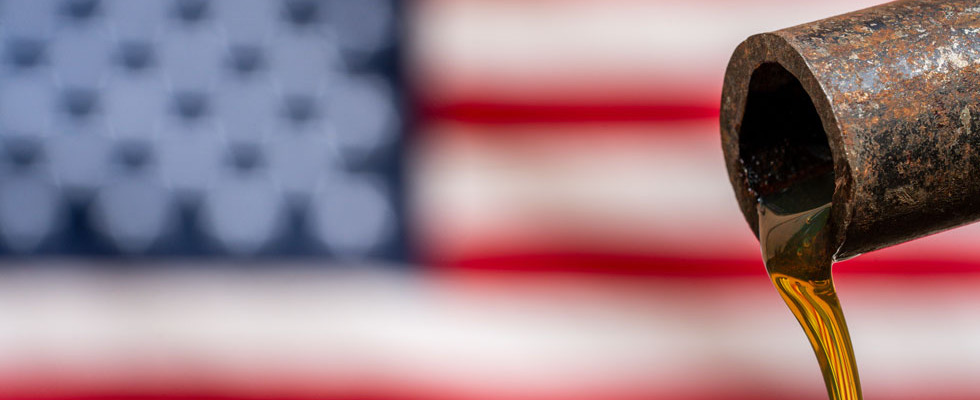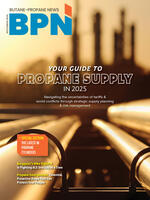
“The Chinese zodiac sign for 2025 calls this the ‘year of the snake,’” said J.D. Buss, president of Westlark Advisors. “It might be more appropriately called the ‘year of tariffs.’ Multiple dates have come and gone with tariffs being implemented, pulled back, threatened again and then reinstituted.”
Buss did not want to make a statement regarding whether tariffs will continue or for how long, but touched on their impact and two key items to watch.
“The immediate impact of tariffs was a downward pressure on the energy markets,” Buss said. “From early January 2025 through April 2025, West Texas Intermediate (WTI) crude prices went from a high of $80/barrel (bbl) to $55/bbl. Tariff reprieve and conflict in the Middle East allowed crude to soar back to the upper $70s/bbl before dipping to the $65/bbl level once tariffs came back into vogue in mid-July.”
Buss said that another impact from tariffs has been a heightened level of uncertainty that can push buyers and sellers into snap decisions.
“An example of this came in April when Middle Eastern trading firms and suppliers purchased U.S. export volumes to arbitrage global tariff regulations. Many Middle Eastern firms have close ties to Asian buyers, from India to China, and these firms also were not subject to U.S. tariffs. This allowed for U.S. volumes to still serve Asian buyers, just through alternative supply routes.”
This shift, however, has not been able to last all through the summer. As of July 2025, Buss noted that “Aug. 12 looms as the next deadline for a China/U.S. trade deal to be completed. Some firms may be waiting until there is more clarity regarding if, or what kind of, a deal is completed to make more propane purchases. That may be contributing to some of the stronger build rates during June and early July 2025.
“While we watch the impact of price changes and volume shifts due to uncertainty, we must keep looking at how we prepare to weather the continued tariff storm that may persist through the rest of this season,” Buss said. “We see two key elements for every retail distributor to watch.
“First, stay abreast of international activities,” he continued. “Any shift or change in international propane buying has a massive impact on U.S. inventory and price levels. Rarely does it matter if there will be a strong crop dry or if there will be cold weather.”
Buss said what has become more important is if Chinese propane dehydrogenation (PDH) plants shift from naphtha to propane or vice versa, if it is exceptionally cold in Europe and Asia for winter, and if there are any operational issues at an export loading facility.
“These impact prices much more than items that impact domestic North American demand.”
Second, Buss said to know the meaning of a tariff. “Tariffs are usually on products moving from one country to another. Specifically, every importer is required to provide an invoice to U.S. customs documenting the value of their product that is crossing into the U.S.”
He noted there always exists a possibility that this customs invoice could be quite different from the potential proposed tariff that a supplier could charge at a terminal.
“As the saying goes, the devil is in the details, and understanding the details of tariffs could save your firm money in future months.
“As we have cleared the halfway point of 2025, tariffs could be impacting the economy for the remainder of this year,” Buss concluded. “While we may not be able to change that, we can prepare ourselves to understand the impact of tariffs and prepare our business to make the best decisions during this time as well.”
Anne Keller, managing director at Midstream Energy Group, said, “My thought framework for this is that the [Trump] administration has so far kept its promise to American consumers to keep the prices of oil products low, even though it has introduced conflicts with the other goal of increasing domestic production.”
She noted tariffs and restrictions on ethane and propane exports have introduced risks to Chinese chemical producers.
“One apparent side effect is that China’s imports of naphtha — an alternative ethylene feedstock — have risen quite a bit,” she said. “For the 2025-2026 winter season, this should mean plenty of domestic supply and minimal upward price pressure. As of today, forward wholesale prices for Q4 are only 2-3 cents above current levels, which indicates the market isn’t too concerned about negative surprises so far.”
“The concern over tariffs to date seems to be overdone so far,” said Jeff Thompson, supply consultant at Propane Resources. “Much of the tariff increases are being eaten without pass-through to consumers. Propane is net long in the U.S. The tariff impact would likely play out with countries restricting propane imports from the U.S. This would back up propane in the U.S. and possibly weaken prices.”
“Trying to decipher and make decisions based on the ever-changing tariff and trade negotiations doesn’t sound very easy,” said Phil Farris, director of Wholesale Marketing at 3Eight Energy. “I think uncertainty is the key word. Uncertainty is risk, so you either accept it or try to protect yourself from the possible effects.”
Additional Global Factors as Winter 2025-2026 Approaches
As of mid-July, when BPN spoke to supply experts, propane inventories were at 82.5 million barrels (MMbbls), very close to levels a year earlier, with many analysts believing inventory could reach 100 MMbbls by the beginning of the fourth quarter when weather starts to lead to drawdowns. Mont Belvieu, Texas, propane was trading at 72 cents per gallon (cpg) and Conway, Kansas, propane was trading at 68 cpg.
With exports continually able to go out of the U.S. in large quantities amid many global factors, BPN asked the experts about the biggest issues to watch that may affect prices in the coming weeks and months. The war in the Middle East, as well as the Russia-Ukraine war, were noted in addition to tariffs for the uncertainty they bring to the marketplace.
“History tells us over and over to look for the peak crisis and sell it,” Thompson said. “Crude has continued to move and any attempt to shut down the Strait of Hormuz would be met with a punishing response from the U.S. Ukraine is a European event. Oil and gas continue to move. It is the world’s life blood. [Russian President Vladimir] Putin can’t surrender or negotiate. It would show weakness. This is going to last a long time. From an energy point of view, it opened and deepened markets for U.S. energy, including propane.”
“We believe the odds of a ‘negative’ surprise, meaning higher prices, are probably higher than our mainstream media is expecting,” Keller said. “We see a persistent gap between commentary around moderation (sub $65 for U.S. WTI) in crude prices and published data that shows inventories at five-year lows for oil in key areas, along with continuing issues with distillate supply. Propane can substitute for distillate if unexpected events cause severe shortages and liquefied natural gas can’t in the near term. And severe winter weather will tighten the market if it is widespread.”
“Similar to the tariff concerns, these are activities you have no control over,” Farris said. “‘Markets on edge’ means waiting for an event to spike prices. Do you wait and watch or protect yourself beforehand?”
Farris noted that this year, nontraditional issues seem to have more influence on markets. “Politics, military conflicts, the Middle East, tariffs, trade deals — all issues that can change direction quickly, and U.S. retailers have no control over this,” he said. “With inventory and transportation issues, the solutions or adjustments are clearer. Nontraditional issues create more confusion and uncertainty.”
Regional Propane Supply Challenges & Concerns for 2025-2026
BPN asked the supply experts to discuss regional challenges and concerns to be aware of for 2025-2026.
“In the Southeast, PADD 3 inventory appears to be heading in the right direction, so supply should be adequate,” Farris said. “For dealers that have prepared and developed key relationships, transportation should not be an issue. Rail movements are always affected by weather and holidays, and pipeline or terminal mechanical issues are always a concern, especially with an aged distribution system.”
“PADD 2 is the market to watch. PADD 3 is exports,” Thompson said. “If the Midwest gets pulled early, it could be a long winter. If Q4 is mild, traders will likely relax but look to run Conway if the opportunity presents itself.”
Thompson believes this would put us at the point of build season where traders will start looking at fundamentals.
“How much inventory is in PADD 2 and what can we expect? As long as we stay on the north side of the five-year average, traders will watch it. If we get below the five-year average, traders could start pushing prices higher.”
“Although prices could move up on headline news, U.S. supply should still be more than adequate for our domestic markets,” Keller said. “The [liquefied petroleum gas] shipping companies have caught a bid recently, most likely on the projection that export volumes will move up with capacity expansions at Energy Transfer’s Nederland and Marcus Hook terminals. But with China holding back, we shouldn’t have concerns about maintaining supply.”
Keller said issues that might affect winter supply include the operational status of the Marcus Hook expansion and Canadian West Coast exports.
“If we have a severe winter in the Northern Hemisphere, Northeast marketers could find themselves bidding against European markets later. In the northern Rockies, the supply we’re used to being able to get from Canada is also a focus for Asian buyers who are now able to take over 100 bbls per day from Vancouver — 15 days closer than the U.S. Gulf.”
Keller encouraged retailers to watch the status of projects designed to pull barrels from formerly “stranded” supply points that are being connected to regional Y-grade systems in the Bakken and Powder River basins. “Oneok’s Elk Creek pipeline expansion adds another 135 MMbbls per day of capacity to move NGLs south, and their intent to build an export terminal in Texas means tightening balances in the region,” Keller said. “Kinder’s Double HH crude pipeline conversion to NGL service will provide area producers with another pipeline outlet for C3+ from field compression and older gas plants, which pulls those barrels out of the regional market too.”
What Is a Good Buying Strategy in This Market?
Is it time to buy gallons for this winter or even for future seasons? BPN asked the supply experts for their thoughts on this.
“There is some risk of a move up in prices, but with the Q3-Q4 differential as low as it is, it seems safe to wait a bit longer to make that call,” Keller said. “Would it be worthwhile to cover gallons for future winters? Even though the outlook for NGL supply is continued growth — even if only because the gas portion of U.S. hydrocarbon production continues to grow — the odds that U.S. crude supply growth is over are getting higher. If policy continues to favor lower consumer prices over [exploration and production] industry costs and exports continue to grow, we could have a ‘supply surprise’ that lifts the forward curve. Out year buys for 2026-2027 and beyond are worth considering.”
“2025-2026 is about making budget. 2026 and beyond is about opportunity,” Thompson said. “Cover what you’ve sold this winter. Start layering 2026 and beyond in small increments.”
“Historically, margins are good — even exceptional in most areas. It hasn’t always been that way, and it won’t stay that way forever,” Farris said. “Are you going to play the market, betting on even better results? Or take what you know will be a solid performance? Why let things you can’t control decide the outcome? Still, everyone has their own ideas, and the answer is as much as you are comfortable with. If the market uncertainty is there (or even greater) for the future, why not take the same precautions as this year to protect your business? So yes — as far out as possible.”


